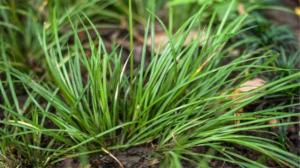Introduction
Coca leaves are a natural stimulant that have been used for thousands of years by indigenous people in South America. They are the source of cocaine, but the plant has many other uses. In this article, we will explore where the coca plant grows, as it is a key factor in the cultivation and distribution of coca products.
The Geography of the Coca Plant
The coca plant grows naturally in the Andean region of South America. This region spans over several countries, including Colombia, Bolivia, Peru, and Ecuador. The coca plant thrives in warm, humid climates and is found in areas with elevations ranging from 1,000 to 3,500 meters above sea level.
The Cultivation of the Coca Plant
Coca leaves are typically grown in small plots, often on steep slopes or terraces. The plant requires regular sunlight and rainfall, as well as fertile soil that is rich in nutrients. Most coca farmers in the Andean region use traditional farming methods that are environmentally sustainable and rely on natural resources.
The Role of the Coca Plant in Traditional Culture
The use of coca leaves is an important part of traditional Andean culture. The leaves have been used for thousands of years as a medicine to treat a variety of ailments, including altitude sickness, fatigue, and gastrointestinal problems. Coca leaves are also used in traditional religious practices and are considered sacred by some indigenous communities.
The Controversy Surrounding the Coca Plant
Although the coca plant has important cultural and medicinal uses, its association with cocaine has led to controversy and conflict in the Andean region. Coca production is illegal in many countries and has been the subject of intense drug enforcement efforts. However, some argue that the criminalization of coca cultivation has negative social and environmental impacts, as it has led to the displacement of farmers and the destruction of natural habitats.
The Future of the Coca Plant
Despite the controversy surrounding the coca plant, there is growing interest in its potential non-narcotic uses. Coca leaves contain compounds that have analgesic and anti-inflammatory properties, and some researchers are exploring their use as a natural alternative to synthetic painkillers. In addition, coca leaves are a source of antioxidants and other nutrients, making them a potential superfood.
Conclusion
The coca plant is an important part of South American culture and has been used for thousands of years by indigenous communities. Although the plant's association with cocaine has led to controversy and conflict, there is growing interest in its potential non-narcotic uses. Understanding where the coca plant grows is key to managing coca production and supporting sustainable farming practices.

 how many times do yo...
how many times do yo... how many planted tre...
how many planted tre... how many pine trees ...
how many pine trees ... how many pecan trees...
how many pecan trees... how many plants comp...
how many plants comp... how many plants can ...
how many plants can ... how many plants and ...
how many plants and ... how many pepper plan...
how many pepper plan...































